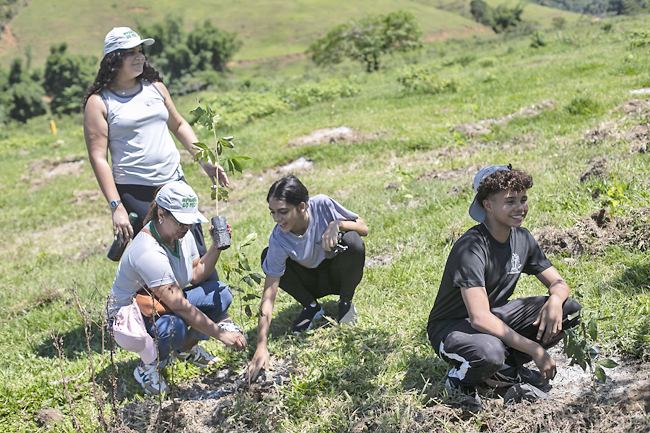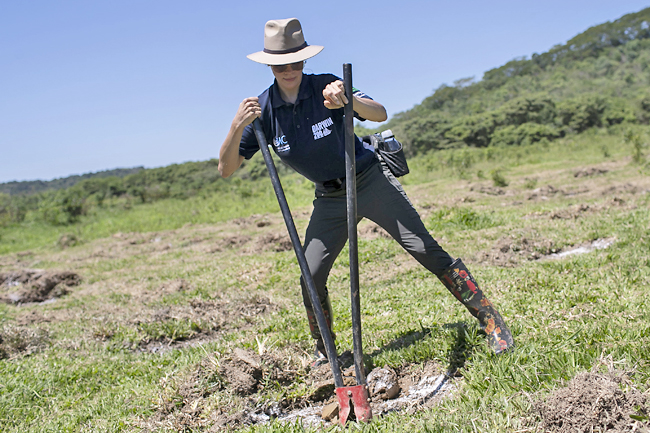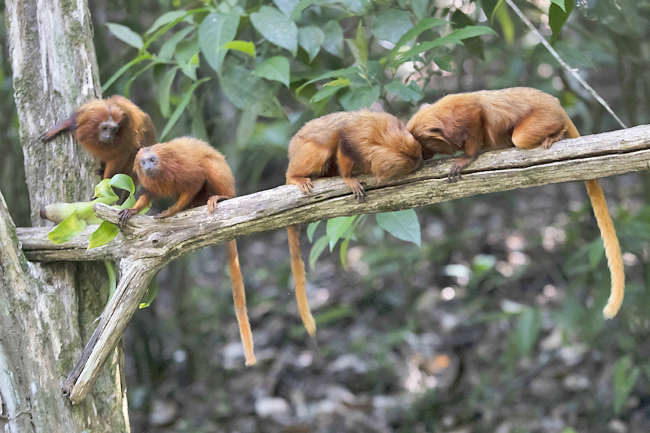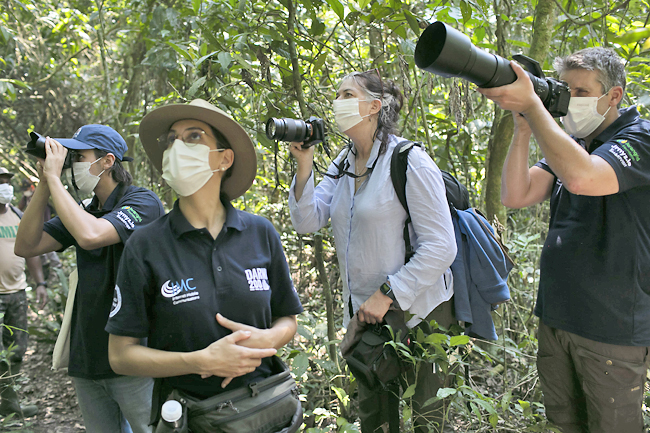AP – Dozens of young people kneeled under the scorching sun last week in Rio de Janeiro’s rural interior, planting a green corridor that will be a future safe passageway for the region’s most emblematic and endangered species, the golden lion tamarin.
The 300 tree seedlings they planted last week – only inches tall at present – will eventually connect two patches of forest together. It is the latest in a series of incremental forest growth initiatives driven by environmentalists, providing an ever-larger habitat for the monkey. Until recently, the bare and dry land they were replanting belonged to a ranch owner who had torn down its trees for cattle pasture.
Rampant deforestation over centuries has decimated this part of Brazil’s Atlantic Forest, the only place in the world where the small, copper-coloured monkey whose face is framed by a silken mane can be found. With fewer than 5,000 individuals, it is considered an endangered species.
“One of the biggest problems is the fragmentation of the forest,” said Executive Director Luís Paulo Ferraz of the Golden Lion Tamarin Association, known by its Portuguese acronym AMLD. “Otherwise the monkeys start mating within their own families.”
Ferraz said monkeys are too scared to cross the few hundred metres of bare land that sometimes separate two isles of green vegetation, fearing they might become the prey of larger predators, such as big cats. Hence the need for green corridors.




Applauding their effort was Sarah Darwin, the great great granddaughter of Charles Darwin. The British botanist was joined by a handful of young naturalists who are retracing the sailboat expedition taken by Charles Darwin nearly 200 years ago that led to his theory of evolution, part of a project called Darwin200.
“He arrived in the Brazilian Mata Atlantica forest and had a moment of clarity… a peak experience, where he felt at one with nature,” Darwin said as she entered the forest, known for its astonishing diversity of mosses, ferns and other vegetation.
In the canopy above, the small golden monkeys with long tails were jumping from one branch to another. “One of the most enduring experiences of his life,” she added.
Before colonisation by the Portuguese in the 16th Century, the Atlantic forest biome coveredmore than 500,000 square miles near and along Brazil’s coast. Less than 15 per cent of that remains today, according to The Nature Conservancy.
In the specific region of the Atlantic forest where golden lion tamarins can be found, the forest is down to just two per cent of its original size, Ferraz said.
Sugar cane and coffee plantations were the main driver of early deforestation.
Then came urban development and cattle pastures. In the 1970s, when scientists began efforts to save the species, there were just 200 golden lion tamarins left, according to AMLD.
In Brazil, the animal became a symbol for wildlife preservation, even featuring on the country’s 20-real bill.
In recent times, the science and conservation non-profit has been purchasing land from farmers and cattle ranch owners, which they then reforest, one patch at a time. They bought a first parcel of 137 hectares in 2018, and another of 180 hectares in November.
The process is slow and expensive, as it requires heavy and regular maintenance, especially in the first few years. But it is rewarding.
On the ground, the bare hills bought by AMLD in 2018, which they began reforesting the following year, have reclaimed their vibrant green, covered with a healthy forest and inhabited by many animal species they can trace thanks to night vision cameras. And in spite of a bad bout of yellow fever in 2018 – when the population dropped more than 30 per cent in a matter of months – there are now more golden lion tamarins than at any time since conservation efforts began.
According to the association’s latest survey, published earlier this year, there are around 4,800 individuals. – Diane Jeantet



